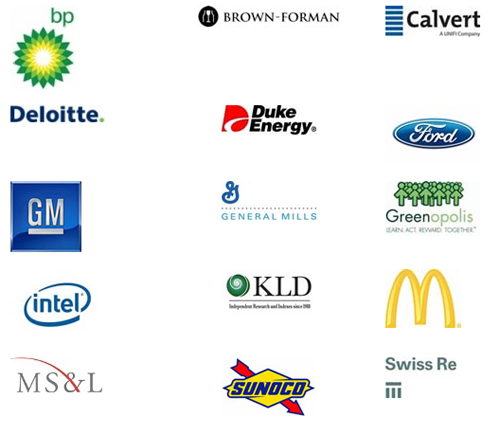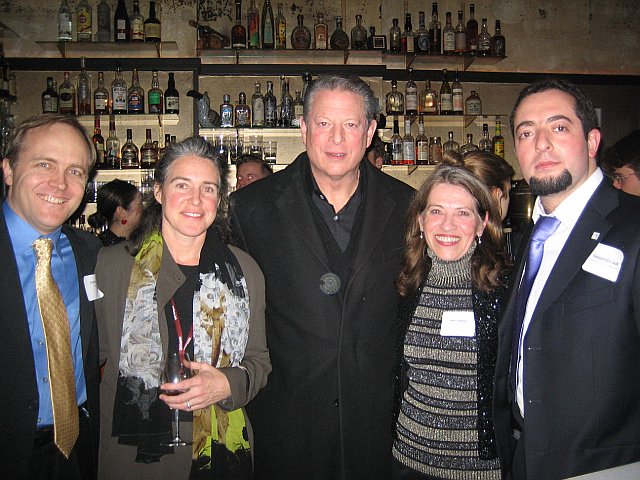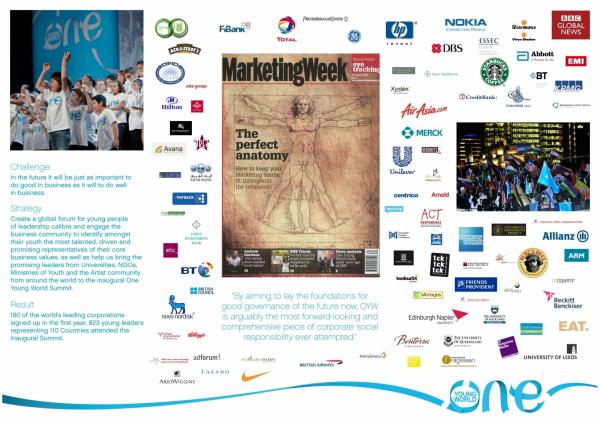
Truth has Died. Artist: Francisco Goya, 1814
Acceptance and Subservience Required
Industrialized capitalism is destructive, by its very nature, to all life on Earth. This is even more so when wedded to investment capital. Every living thing on the planet is now on its way to being commodified – including people, who are now considered “human capital” in 21st century parlance. [1]
A recent flood of seemingly urgent reports was released, in waves, over the month of November 2012. This was to ensure a sense of urgency, to inaudibly signal that the launch of the “green economy” resonates with civil society. The role of the non-profit industrial complex in the unveiling of the illusory green economy to the world has never been so vital. For it is only via these very institutions that it would be possible to manipulate civil society into embracing a suicidal model that locks the world into catastrophic, irreversible ecological collapse once and for all. The non-profit industrial complex, in tandem with the corporate-media complex, allows Euro-Americans to collectively continue their fetishized addictions and unspoken racist ideologies unabated – in exchange for the sacrificing of our own children to appease the corporate gods.
350.org’s Divestment Tour |More Bread & Circuses
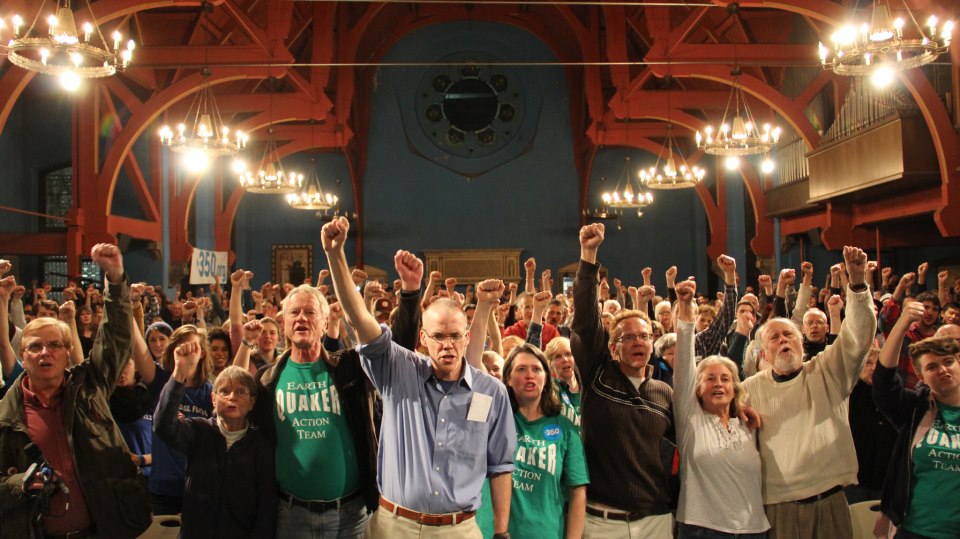
Movement or cult? Image: The First Unitarian Church for Do the Math in Philadelphia – “ready to put the climate movement into a new gear.” | November 17, 2012
“You can see that all the co-optive forces that have worked together to elect and re-elect Obama are now emphasizing coming together in a greater, ongoing, funded, top down cohesiveness. These friends of mine believe they have the strategy for saving the planet and it wonderfully coincides with feathering their own nests! The Insider might seem to be a minor irritant, but like Counterpunch itself they can’t stand it because it exposes them for what they are, lap dogs and liberal PR flacks with funding from what I call the Dem 1%. This “Progressive Movement building” bullshit from the Van Jones crowd is not a movement for radical change, it’s a hog trough designed to maintain the liberal corporate status quo. But for many it’s hard to see when your head is down and you are slurping up the funding slop” – Author John Stauber responding to a member of the Business Ethics Network who reacted with indignation and feigned confusion to Stauber’s quote, which was cited in a Counterpunch article. Stauber’s “punishment” was expulsion from BEN.
350.org’s most recent campaign is its “Do the Math” divestment tour. The stated goal of this campaign, which appears online as a project of Fossil Free [2], is to pressure educational and religious institutions, city and state governments, and other institutions that serve the public good to divest from fossil fuels. The identity of the individual who registered the website is listed as private. Such campaigns (not unlike those of electoral races, hence the name “campaign”) are designed, thus destined, to not challenge the hegemony of the fossil fuel industry in practice, but rather, only in theory. Such sophisticated public relations campaigns as this one are quite genius in a multitude of ways. Cloaked under the guise of tackling the root causes of the global climate crisis, such campaigns change nothing. Rather, they ensure the populace is participating in what it has been convinced is meaningful action – and nothing more.
350.org’s “Do the Math”
350.org front man, Bill McKibben tells us that “It’s not all right to be profiting from the wreckage of the planet” yet he will not tell us that the unparalleled violence upon the planet and its most vulnerable peoples is inherently built into the system of industrialized capitalism. He will not tell you the simple fact that every day this system is allowed to continue represents one more day of profiteering from the wreckage of the planet and brings us one day closer to our shared global annihilation. Further, McKibben undermines any campaign that attempts to bring this most critical issue to the forefront of the global debate.
Many inadequacies in both the science and the logic have already been made clear by many reputable activists. On July 24, 2012, three responses to McKibben’s July 19, 2012 article in Rolling Stone magazine [“Global Warming’s Terrifying New Math: Three simple numbers that add up to global catastrophe – make clear who the real enemy is”] by Anne Petermann, Dr. Rachel Smolker, and Keith Brunner were published on Global Justice Ecology Project. Selected excerpts are as follows:
Anne Petermann writes:
“Can the very markets that have led us to the brink of the abyss now provide our parachute? McKibben points out that under this system, those with the money have all the power. Then why are we trying to reform this system? Why are we not transforming it?” “… if you focus solely on eliminating fossil fuels without changing the underlying system, then very bad things will take their place because it is the system itself that is unsustainable. It is a system designed to transform ‘natural capital’ and human labor into gargantuan profits for an elite few: the so-called ‘1%.’ Whether it’s driven by fossil fuels or biofuels or even massive solar and wind installations, the system will continue to devour ecosystems, displace forest-based communities, Indigenous Peoples and subsistence farmers from their lands, crush labor unions and generally make life hell for the vast majority of the world’s peoples. That is what it does.”
Keith Brunner writes:
“Bill offers divestment campaigns, à la South Africa, as a favored strategy to hit the fossil fuel companies financially. Sounds great, except when you look at the trends over the past few years of big institutional investors – like pension funds and university endowments – to move their money (often through a private equity intermediary) into, amongst other things, ’emerging market’ natural resources and infrastructure funds, facilitating land and resource grabbing across the South. It’s what the ‘progressive’ climate-aware fund managers (like the CERES folks) are advocating, and it’s a problem. And that’s another place where he misses the point: Yes, the fossil fuel corporations are the big bad wolf, but just as problematic is the system of investment and returns which necessitates a growth economy (it’s called capitalism). That Harvard University endowment fund manager has a ‘fiduciary responsibility’ to get a certain annual return, which means they have to put their money into growing, profitable funds or firms or states (what’s the difference anyhow), which grow through exploiting people and dismantling ecosystems. We aren’t going to invest our way to a livable planet. We need to focus on the root causes and false solutions, lift up the community solutions, and push the big green groups to become more holistic in their analysis so they don’t shoot us all in the foot.”
A Semblance of Cowards
This view, upheld by most activists, even outstanding ones, that we must “push the big green groups to become more holistic in their analysis so they don’t shoot us all in the foot” is based on a collective naiveté and false assumption that corporate environmental NGOs can be made to “do the right thing” by moral suasion. The steadfast refusal of real activists and real grassroots groups to acknowledge and unapologetically expose the non-profit industrial complex as the gatekeepers of hegemonic rule represents the movement’s greatest and most tragic failure.
They are not shooting “us all in the foot,” they are shooting us all in the head – at point-black range.
As surreal as it is, the so-called climate movement has sabotaged any chance of mitigating a full scale global ecological collapse, having instead cleared the way for corporate profiteering, deforestation, fund-raising and full-out omnicide. Collectively, this faction of the 1% values their privilege more than life itself.
The 350.org Divestment Tour: Brought to You by Wall Street
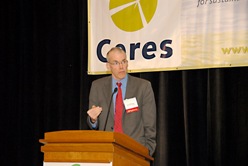
Ceres Conference 2007
“Efforts to control corporations’ destructive impacts must have a critique of corporate power at their heart and a will to dismantle corporate power as their goal, otherwise they reinforce rather than challenge power structures, and undermine popular struggles for autonomy, democracy, human rights and environmental sustainability.” – Corporate Watch
People may ask themselves just why the financiers of climate destruction would give a flying fuck about the climate. One may wonder just why McKibben and friends went to the Wall Street billionaires to solicit their input (and permission) on exactly just what type of divestment would be suitable to their liking. Yet, the answer is astoundingly simple: the “Do the Math” divestment tour is not a campaign meant to impair (let alone destroy) Wall Street, big energy, or finance capital – rather it is a strategic public relations campaign, another well-orchestrated distraction for the masses.
A key design element within the non-profit industrial complex is that “movements” are created top down. In the case of Rockefeller’s 350.org/1Sky, the game is simply this: 350.org locals take their marching orders straight from the top (350.org International) while “the top” (McKibben et al) take their marching orders directly from their funders – and in the case of 350.org’s Do the Math Tour, those funders are Wall Street investors.
McKibben, along with key 350.org staff, developed the divestment campaign in consultation with Ceres Investors – referred to fondly as their “Wall Street friends.”
Such loyalties are par for the course in the corporate enviro world where Wall Street execs can be referred to as “our Wall Street friends.” Never mind that Wall Street is the very root cause of our multiple and ever accelerating ecological and economic crises, not to mention the global food crisis. These crises are not truly “crisis” in a spontaneous sense, rather they are strategic by design with the aim of furthering corporate profit, which is simply insatiable. [Watch: The Real Hunger Games – Big Commodity Traders Control World Grain Market. See more videos on this topic here.]
The 350.org divestment tour announcement states:
“It’s simple math: we can burn 565 more gigatons of carbon and stay below 2°C of warming – anything more than that risks catastrophe for life on earth. The only problem? Fossil fuel corporations now have 2,795 gigatons in their reserves, five times the safe amount. And they’re planning to burn it all – unless we rise up to stop them.” [Emphasis in original.]
What McKibben and the “Progressive Greens” Won’t Tell You
This 350.org statement above is incredibly dangerous and misleading as it implies two things: 1) that we can continue to burn more fossil fuels for some time; 2) that only when we exceed 2ºC do we risk catastrophe for life on Earth; and fails to mention a third: the fact that we are already committed to a minimum temperature increase of 2.4ºC (Ramanathan and Feng), even if we stop burning all fossil fuels today.
“[But] we should accept the fact that we have actually written off some of the southern hemisphere communities as a consequence of sticking to 2 degrees centigrade.” – Professor Kevin Anderson [Also see “What Defines Criminal Negligence?]
“…we need urgent to radical reductions way beyond anything we’ve been prepared to countenance, we’ve really left it too late to go for a 2 degree C.” – Professor Kevin Anderson
For now, let us ignore the fact that in 1990 the “Advisory Group on Greenhouse Gases” warned that a global temperature increase “beyond 1 degree C may elicit rapid, unpredictable and non-linear responses that could lead to extensive ecosystem damage” while a temperature increase of 2ºC was viewed as “an upper limit beyond which the risks of grave damage to ecosystems, and of non-linear responses, are expected to increase rapidly.” The disappearance of this paper represents perhaps the greatest cover-up in history not to mention a crime against humanity. The report was quietly and deliberately buried by NGOs such as Greenpeace, Friends of the Earth, the scientific community and governments. Economic growth, sacrosanct, trumped life itself.
350.org states that fossil fuel corporations are “planning to burn it all – unless we rise to stop them.” Stop them by doing what? Appealing to Obama? Signing a 350.org petition? Getting some universities to not invest in them? Rather than deal with reality (capitalism, imperialism, militarism, etc. etc.) 350.org continues to lead in the manufacturing of hope for the hope industry. 350.org ensures audience acceptance and mass appeal of their brand precisely because they do not tell their target audience that it will be absolutely necessary to give up their privilege if we are to salvage a planet conducive to life as we free-fall into the anthropocene epoch. [4] 350.org ensures their audience that there is no need to question our (suicidal) economic system (let alone the necessity to dismantle it) while “real” climate catastrophe is always far, far away. 350.org is the soma of the 21st century.
“False consciousness of the nature of American liberalism has been one of the most powerful ideological weapons that American capitalism has had in maintaining its hegemony.” — James Weinstein
One must take note of 350.org’s obsession with fossil fuels exclusively. With certainty, 350.org, in tandem with the non-profit industrial complex, is strategically preparing the populace to accept what Guy McPherson calls the “third industrial revolution.” This “climate wealth” agenda will include false solutions such as biomass, unbridled “green” consumerism, carbon market mechanisms such as REDD, etc. What it will not include is: the urgent necessity to destroy the expanding military empire, to transition from/dismantle our current economic system, to address the industrialized livestock industry, to massively scale back and conserve, to employ tactics of self-defense by any means necessary, nor anything else that is imperative to address if we are to mitigate full-out omnicide. In a nutshell, the agenda will not include anything that would actually pose any meaningful threat to the system. It’s always divide and conquer with the corporate/elite-funded NGOs. The point is to ensure the masses fight meaningless battles and never “connect the dots,” to use 350.org’s phrase. Just like the Avaaz founder MoveOn.org, 350.org successfully induces consent.
Language is everything in the world of fantasy and public relations. Consider McKibben’s statement expressing surprise how his article “Terrifying Math” went “oddly viral” in Rolling Stone. This is hardly the case. In the non-profit industrial complex, all “messaging” is polled prior to publication in order to measure public response and appeal to the status quo. Most messaging is not written by so-called activists but instead is written by highly prized PR executives who help the hope industry distribute their harmless campaigns to the selected/cooperative networks.
350.org and friends serve a vital purpose. These organizations successfully make certain that the public feel good about themselves. Simultaneously, they ensure obedience and passiveness to the state in order to secure current system/power structures and keep them intact. As always, such campaigns focus on list-building for those who benefit and profit from email lists, etc. This focus is done under the guise of “movement building.” One need not be a rocket scientist to comprehend the common sense rationality that organizations funded by the Rockefeller Brothers Fund will never conduct anything meaningful that would serve to challenge the root causes of the climate crisis. This is a cynical game played by those who fund the NGOs within the non-profit industrial complex. The costs are high with 400,000 dying each year from climate-related disasters. Fortunately for the oligarchy, a deep-rooted racism that purrs like a kitten, humming along under the movement’s veneer, ensures these deaths have no meaning whatsoever. [September 27, 2012: “Nearly 1,000 children a day are now dying because of climate change, according to a path-breaking study published Wednesday (PDF) and the annual death toll stands at 400,000 people worldwide.”]
Author Christian Parenti raises many key questions for consideration in his article Problems With the Math: Is 350’s Carbon Divestment Campaign Complete? published on November 29, 2012:
“The official version of capitalism holds the stock markets exist to help firms raise money for investment. But empirical investigation reveals that the opposite is more often the case. In reality, the stock market, though culturally powerful, is not particularly important to how capitalism actually creates wealth (and pollution).
“So how will dumping Exxon stock hurt its income, that is, its bottom line? It might, in fact, improve the company’s price to earning ratio thus making the stock more attractive to immoral buyers. Or it could allow the firm to more easily buy back stock (which it has been doing at a massive scale for the last 5 years) and thus retain more of its earnings for use to develop more oil fields.”
It must be noted that Wall Street’s 350.org’s divestment campaign serves yet another vital purpose. We have now reached the critical juncture where corporations will begin the slow process of ridding themselves of their toxic holdings while preparing for a new wave of unprecedented, unsurpassed “climate wealth.” We are about to witness the global transition to profitable false solutions under the guise of “green economy” coupled with the complete commodification/privatization of the shared commons by the world’s most powerful corporations. All while they simultaneously greenwash themselves as noble stewards of the Earth. In the human species closing epilogue, this will be the greatest lie ever told sold.
Ceres 2013: Guest Speakers: 350, PG&E, Bloomberg & GM
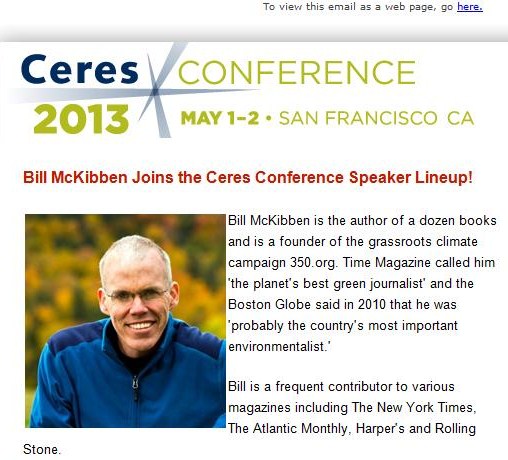
On May 1-2, 2013 in San Francisco, California, Bill McKibben joined 350’s divestment campaign partner, Ceres, at the 2013 Ceres Conference. From the Ceres announcement:
“Bill McKibben Joins the Ceres Conference Speaker Lineup! Bill McKibben is the author of a dozen books and is a founder of the grassroots climate campaign 350.org. Time Magazine called him ‘the planet’s best green journalist’ and the Boston Globe said in 2010 that he was ‘probably the country’s most important environmentalist.'”
McKibben joined other featured speakers such as Ezra Garrett (Vice President of Community Relations and the Chief Sustainability Officer for Pacific Gas and Electric Corporation), Curtis Ravenel (Global Head, Sustainability Group, Bloomberg), Mike Robinson (Vice President for Environment, Energy and Safety Policy, General Motors), and many others involved in the promotion and growth of “green” capitalism. Sponsors included Bank of America, PG&E, Bloomberg, Wells Fargo, Sprint, Baxter, Citi, Ford, GM, Brown-Forman, Walt Disney, Prudential, TimeWarner and many more of the planet’s most powerful corporations. Tickets for the conference ranged from $600 (student rate) to $1200 each, with a discounted price of $259 per night for the Fairmont Hotel.
The Art of NGO Discourse

Tank cars at Canadian Pacific’s Port Coquitlam yard east of Vancouver. Photo by DARRYL DYCK.Economic Planning Associates (EPA) estimates that railcar manufacturers have received orders for more than 89,000 rail cars — the highest level since tracking began in 1980. Deliveries are expected to increase from 58,000 units in 2012 and stabilize at more than 64,000 units annually over the next five years. Due to lack of manufacturing capacity, the unit prices are up, and there are some indications that manufacturers may even be selective on the orders they take. [Source: Shale Oil and Gas: Revitalizing Inland Transportation Networks, Sept 2012]
Mr. Rockefeller could find no better insurance for his hundreds of millions than to invest one of them in subsidizing all agencies that make for social change ad progress. – Frank Walsh, The Great Foundation
And while your attention is successfully diverted from the fact that giant algae blooms are now thriving under thinning Arctic sea ice (June 18, 2012: “First, we were thinking, ‘This can’t be. This can’t be possible. There’s no way this can be what it looks like,'” Kevin R. Arrigo, a biological oceanographer at Stanford University in California and lead author of the study, told CBCNews.ca. “Then the next thing was: ‘Has anybody seen this before?'”) … and while huge crabs more than a metre across have invaded the warming Antarctic and while the elites are hopeful that you’ll buy into a divestment campaign that doesn’t actually give us a hope in hell of averting ever-accelerating planetary ecological collapse, let me leave you with this…
NGO discourse in America takes many forms. In the sixties, the revolutionary black power movement became the recipient of massive funding and then took the form of black capitalism, with the product of this solution being the current status of Black Americans, who are in a worse position than at almost any other time of their history in every possible way. Similarly, the dire consequences of development and environmental degradation resulting from unbridled mass-consumption as modeled by the West opens up the dialogue of the illusory “green economy” as the solution. The necessity to ban genetically engineered food becomes a “demand” for classist (to be ingested by the poor, uneducated and children) and ineffective labeling.

The necessity to shut down the tar sands in their entirety (as boldly voiced by the most conservative of voices such as scientist James Hansen (Put the Brakes on Tar Sands, Feb 18, 2009) and the former head of IPCC, Rajendra Pachauriof the United Nations (“Canada’s oil sands should be shut down.” Sept. 21, 2009) deliberately evolved into “Stop the Keystone XL!” – conveniently dismissing the fact that the Keystone Pipeline was 2/3 completed and in operation before the KXL campaign was thrust into the public realm. Gone is the original grassroots demand from 2005 to “Shut down the Tar Sands,” which is nothing more than a distant memory. And while 350.org exclaimed “Stop Keystone XL!” (a message reverberated by the obedient “progressive” media), the rail industry [3] was busy building the 40,000 oil tankers required for the transportation of tar sands oil, now near completion. [4] The selling feature of this transit method, put forward by industry, is that short of an armor piercing round, these tankers will not leak if they derail. Meanwhile, the construction of the oil warmer facilities in North Dakota (near the Bakken oil fracking fields) has been completed. Eight trains of 110 tankers can carry the same capacity of oil that the Keystone and the KXL can facilitate. BNSF Corp. is now transporting approx. 500,000 barrels of oil daily. Nowhere in the KXL campaign did it convey that on November 3, 2009, Berkshire Hathaway announced that, using stock and cash totaling $26 billion, it would acquire the remaining 77.4 percent of the Burlington Northern Santa Fe Corporation, parent of BNSF Railway, that it did not already own. This was the largest acquisition to-date in Berkshire’s history. [Further reading: Keystone XL: The Art of NGO Discourse | Part I]
The oil tycoons have achieved the best of both worlds. They toast to our collective naiveté and subservient demeanor.
The list of successful NGO discourses goes on and on for miles. Billions of dollars are not pumped into the non-profit industrial complex for nothing.
Notes:
[1] Human Capital: “Fourthly, of the acquired and useful abilities of all the inhabitants or members of the society. The acquisition of such talents, by the maintenance of the acquirer during his education, study, or apprenticeship, always costs a real expense, which is a capital fixed and realized, as it were, in his person. Those talents, as they make a part of his fortune, so do they likewise that of the society to which he belongs. The improved dexterity of a workman may be considered in the same light as a machine or instrument of trade which facilitates and abridges labor, and which, though it costs a certain expense, repays that expense with a profit.” – Adam Smith defining “human capital”
[2] Fossil Free partners are: Responsible Endowments Coalition, Energy Action Coalition, Sierra Student Coalition, As You Sow, Better Future Project, California Student Sustainability Project.
[3] July 28, 2011: Rail makes a comeback in moving oil around the US | January 24, 2012: Warren Buffett cleans up after Keystone XL | January 2012: BNSF expects shales, domestic intermodal and other promising sectors to propel 2012 traffic beyond GDP-growth levels | June 27, 2012: Southern Pacific Resource Corp. completes arrangements to transport and market bitumen via CN to the U.S. Gulf Coast | August 21, 2012: Railways ship bitumen to relieve pipeline bottlenecks | January 7, 2013: Alberta bitumen makes it to Mississippi by rail | August 16, 2012: Keystone XL pipeline construction begins amid protests | March 5, 2013: Buffett Says Gloat Like Rockefeller When Watching Trains
[4] “Tank cars are owned by either shippers or lessors, not by railroads. At year end, Union Tank Car and Procor together owned 97,000 cars having a net book value of $4 billion. A new car, it should be noted, costs upwards of $100,000. Union Tank Car is also a major manufacturer of tank cars – some of them to be sold but most to be owned by it and leased out. Today, its order book extends well into 2014. At both BNSF and Marmon, we are benefitting from the resurgence of U.S. oil production. In fact, our railroad is now transporting about 500,000 barrels of oil daily, roughly 10% of the total produced in the ‘lower 48’ (i.e. not counting Alaska and offshore). All indications are that BNSF’s oil shipments will grow substantially in coming years.” [Source: Berkshire’s Corporate Performance vs. the S&P 500]
http://www.theartofannihilation.com/mck ... ll-street/


